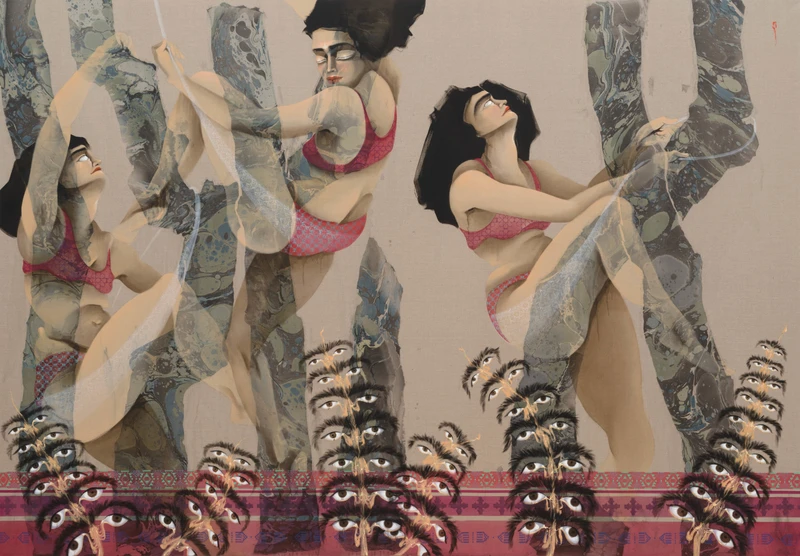Hayv Kahraman: She has no name
12 Apr-25 May 2024


Pilar Corrias is delighted to present She has no name, a solo exhibition of paintings and works on paper by Hayv Kahraman at its Conduit Street gallery. Reflecting on her early experiences as an Iraqi refugee in Sweden, Kahraman's new body of work examines the ways in which colonial practices in the field of botany continue to perpetuate hierarchical structures and gendered metaphors within the natural world and, by extension, sociopolitical contexts.
Drawing parallels with border regime technologies that categorise vulnerable communities, Kahraman confronts the complexities of migration, legibility and resistance in our contemporary world. The haunting absence of irises in the eyes of Kahraman's painted figures, and the unruly 'eyebrow plants' that grow unimpeded, highlight the implications of technologies used in government surveillance efforts, such as iris recognition and biometric scanning.
Intertwining foliate motifs with anatomical forms, Kahraman considers the pervasive influence of Swedish naturalist, Carl Linnaeus (1707-1778), whom the artist was taught to revere growing up in Sweden. Uprooting and transplanting botanical specimens from environments considered exotic or alien to a North-European climate, Linnaeus would reclassify and rename non-native plants, supplanting local and Indigenous knowledge systems in favour of Eurocentric perspectives and mythologies.
A pivotal moment in Kahraman's artistic journey occurred in 2022 during a visit to the Huntington Library in California, where she encountered Linnaeus's rarely seen catalogue of a Dutch garden, Hortus Cliffortianus (1737). On opening the book, Kahraman was confronted by its marbled frontispiece. The art of marbling, a technique with origins in Japan and widely used in Central Asia for decorative and functional purposes, was later employed as a means of preventing the forgery or reproduction of legal documents.
Within this body of work, Kahraman examines the critical tensions at play in Linnaeus's publication: between the symbolic use of marbling, a monoprint used to prevent theft and re-appropriation, and the explicit erasure of the cultural heritage and knowledge of marginalised peoples. Here, the artist experiments with marbling her own handmade linen surfaces using the ebru technique, which translates as 'the art of clouds'. Inhabiting their intentionally irregular landscapes, Kahraman's defiantly anonymous female figures traverse and challenge grid-like systems designed to impose order and identification. In Kahraman's hands, the technique of marbling becomes an act of defiance, a means of building alternative architectures of refuge and resilience.